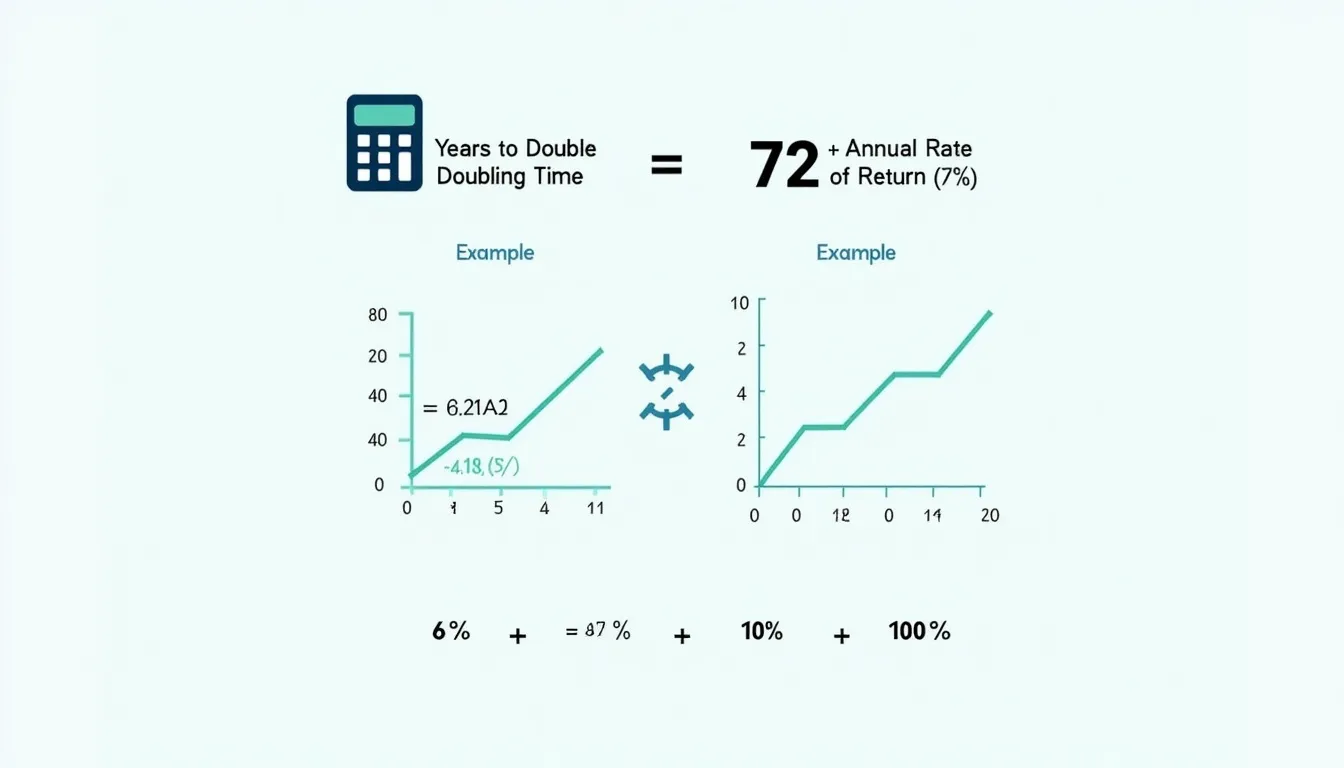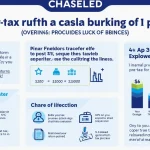Rule of 72 Calculator
Is this tool helpful?
How to use the tool
- Step 1 – Enter rate: Type your expected annual return as a whole or decimal. Example inputs: 6.75 or 12.4.
- Step 2 – Press “Calculate”: The tool divides 72 by your rate to show the years needed to double.
- Step 3 – Read the result: Use it to compare investment options or benchmark financial goals.
Underlying formula
The calculator applies the classic approximation
$$ \text{Years to Double}= rac{72}{\text{Annual Return (\%)}} $$Example calculations
- Input 6.75 %: $$ rac{72}{6.75}=10.67$$ → doubling in about 10.7 years.
- Input 12.4 %: $$ rac{72}{12.4}=5.81$$ → doubling in about 5.8 years.
Quick-Facts
- Most accurate between 6 % and 10 % annual returns (Investopedia, 2023).
- The constant 72 stems from ln(2) × 100 ≈ 69.3, rounded for easy mental math (Bodie & Merton, Finance Textbook 2021).
- S&P 500’s long-term real return averages 7 %-8 % (Federal Reserve Data, 2022).
- A 1 % annual fee stretches doubling time by ~1 year at 8 % gross return (FINRA Investor Education, 2021).
FAQ
What is the Rule of 72?
The Rule of 72 estimates how many years an investment takes to double by dividing 72 by its annual percentage return (Investopedia, 2023).
Why does the formula use 72?
Seventy-two is close to 69.3 (ln 2 × 100) and splits evenly by many integers, easing mental arithmetic (Bodie & Merton, 2021).
How accurate is the estimate?
Error stays below 0.5 years for rates between 6 %-10 %; outside that band, error widens (Morningstar Research, 2022).
Can I apply the rule to inflation?
Yes. Divide 72 by the inflation rate to see how fast purchasing power halves; at 3 % inflation, 24 years (BLS CPI, 2023).
Does compounding frequency change the result?
Monthly or daily compounding shortens doubling time slightly; precise formulas use $$ rac{\ln 2}{\ln(1+r/n)}$$ (CFI Institute, 2022).
What if my return is negative?
A negative rate predicts halving time; the tool currently rejects negative inputs to focus on growth scenarios.
How do fees affect doubling time?
“Even a 1 % fee can erase thousands over decades” (FINRA Investor Education, 2021); subtract fees from your gross return before using the rule.
Is there a similar rule for tripling?
Use 114 for tripling and 144 for quadrupling: Years = 114 / rate or 144 / rate (Corporate Finance Institute, 2022).
Important Disclaimer
The calculations, results, and content provided by our tools are not guaranteed to be accurate, complete, or reliable. Users are responsible for verifying and interpreting the results. Our content and tools may contain errors, biases, or inconsistencies. Do not enter personal data, sensitive information, or personally identifiable information in our web forms or tools. Such data entry violates our terms of service and may result in unauthorized disclosure to third parties. We reserve the right to save inputs and outputs from our tools for the purposes of error debugging, bias identification, and performance improvement. External companies providing AI models used in our tools may also save and process data in accordance with their own policies. By using our tools, you consent to this data collection and processing. We reserve the right to limit the usage of our tools based on current usability factors.







